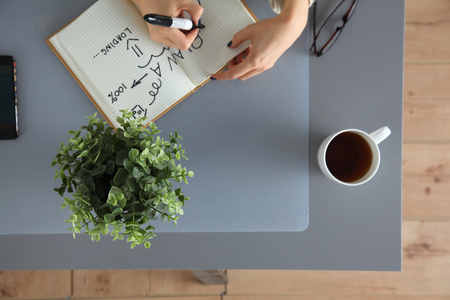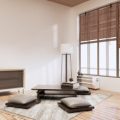Understanding Feng Shui: A Harmonious Approach to Workspace
Feng Shui, the ancient Chinese art of spatial arrangement, has long been associated with creating harmony between individuals and their environments. At its core, Feng Shui is about more than just aesthetics; it seeks to balance the flow of energy—known as “qi”—to foster wellbeing and success. When thoughtfully adapted for a British home office, this philosophy finds common ground with the British appreciation for order, natural light, and understated elegance. By weaving together the foundational principles of Feng Shui with quintessentially British sensibilities, one can curate a workspace that not only looks refined but also enhances focus and productivity. Embracing this harmonious approach means considering both the scientific aspects—such as ergonomics and lighting—and traditional wisdom, resulting in an environment where work feels less like a chore and more like a pleasure. Whether you’re working from a Victorian terrace or a modern flat, understanding how energy flows within your space is the first step towards achieving both wellness and efficiency in your home office.
2. British Home Office Traditions and Modernity
The British home office is a fascinating blend of tradition and innovation, reflecting the nation’s enduring appreciation for both heritage and progress. Historically, the British study—often a wood-panelled room lined with bookshelves—served as a sanctuary for intellectual pursuits, correspondence, and quiet contemplation. In grand country houses and townhouses alike, these spaces were designed to embody order, discipline, and a sense of personal retreat. Over time, however, cultural shifts and technological advancements have transformed the way Britons approach their workspaces at home.
The Evolution of Study Spaces
| Era | Key Features | Cultural Values |
|---|---|---|
| Victorian Period | Heavy furniture, rich mahogany desks, deep armchairs, private libraries | Formality, scholarship, privacy |
| Mid-20th Century | Lighter woods, practical designs, increased natural light | Functionality, comfort, family integration |
| Contemporary | Minimalist decor, ergonomic furniture, digital integration | Flexibility, productivity, wellbeing |
Cultural Influences on Desk Placement
In British culture, the placement of one’s desk has always been more than just a matter of convenience—it speaks to deeper values such as privacy, focus, and respect for tradition. Classic layouts often positioned the desk to face the door or window, allowing for both an open outlook and discreet observation—a subtle nod to British reserve and the desire for both connection and solitude. Modern interpretations maintain these principles while adapting them to open-plan living or compact urban flats.
The Balance of Old and New
Today’s British home offices are shaped by a harmonious interplay between past and present. While many retain vintage elements—such as antique desks or traditional study lamps—they also embrace modern necessities like adjustable chairs and smart lighting. This fusion not only honours the legacy of British design but also supports contemporary needs for adaptability and wellness in the workspace.

3. The Art and Science of Desk Placement
When curating a British home office, desk placement is both an art informed by tradition and a science shaped by psychology and spatial awareness. In British interiors—where functionality meets heritage—the position of your desk can quietly influence mood, motivation, and the overall energy of your workspace. Modern psychological studies reveal that facing a window, for example, not only invites natural light but can boost productivity and enhance mental well-being. This aligns with classic Feng Shui principles, which recommend positioning your desk to command the room—a spot where you can see the door without being directly in line with it. This arrangement fosters a sense of security and focus, echoing age-old British traditions that value privacy while encouraging inspiration from views of leafy gardens or bustling streetscapes outside. Spatial science also advises avoiding cramped corners; instead, place your desk where there’s space to breathe, allowing ideas to flow freely. By blending these scientific insights with the calming tenets of Feng Shui, British home offices can become havens for both creativity and composure—perfectly balanced between time-honoured wisdom and modern design sensibilities.
4. Maximising Light, Views, and Energy Flow
In the uniquely British context, where natural sunlight is a precious commodity and architectural features reflect centuries of tradition, desk placement is as much about practicality as it is about energy. According to both Feng Shui principles and local design sensibilities, harnessing light, framing views, and ensuring unobstructed pathways are key to fostering focus and wellbeing in the home office.
The Value of Natural Light in British Homes
British weather is famously changeable and often overcast. As such, making the most of available daylight is essential. South-facing windows are particularly prized in UK homes for their ability to capture sunlight throughout the day. In Feng Shui, this influx of light is believed to enhance “yang” energy—invigorating creativity and clarity. Strategically placing your desk to face or sit adjacent to a window not only supports these energetic principles but also aligns with traditional British appreciation for sunlit interiors.
Window Views: A Blend of Beauty and Focus
Views matter in British home offices—not only for inspiration but also for mental ease. Overlooking a garden, courtyard, or even a quaint street scene offers visual relief during work hours. Feng Shui recommends avoiding direct alignment with the door or having your back to the window; instead, opt for a position that allows you to enjoy glimpses of greenery or sky without being distracted by outside activity. This echoes classic British interior layouts that prioritise framed vistas while maintaining privacy.
Uncluttered Walkways: Flow Meets Function
Energy flow—or “Qi”—is central to both Feng Shui and good British interior design. Narrow hallways and densely furnished rooms are common in period properties, so maintaining clear paths around your desk is crucial. An open walkway enables both physical movement and energetic circulation, reducing stress and enhancing productivity.
Desk Placement Tips in the Context of British Homes
| Design Element | British Consideration | Feng Shui Guidance |
|---|---|---|
| Natural Light | Maximise use of south-facing windows; avoid heavy drapes | Position desk to receive direct or diffused sunlight |
| Window Views | Frame garden or street scenes; use net curtains for privacy | Avoid back to window; allow soft visual connection with outdoors |
| Walkway Clearance | Keep traditional skirting boards visible; avoid crowding with furniture | Ensure easy movement around desk; promote free flow of Qi |
Cultivating a Harmonious Workspace
By thoughtfully integrating British architectural nuances with Feng Shui wisdom—prioritising light, scenery, and open pathways—you can create a workspace that feels both rooted in tradition and energised for modern productivity.
5. Curating Atmosphere: British Flair Meets Feng Shui
When blending the storied elegance of British interiors with the mindful principles of Feng Shui, every element in your home office should serve both aesthetic and energetic purposes. Begin by choosing textiles—a hallmark of British design—that foster comfort and sophistication without overwhelming the space. Opt for classic patterns like tartan or herringbone in soft wool throws or linen cushions, ensuring these accents rest on or near your desk in a way that encourages focus, yet keeps the qi flowing freely.
Layering Artwork with Intention
Artwork is another opportunity to bridge British tradition with Feng Shui harmony. Consider hanging landscapes of the English countryside or cityscapes of London above eye level, drawing energy upward and inspiring creativity. Position artwork so it faces you as you work, rather than sitting directly behind you, supporting a sense of purpose and protection—key tenets in both traditions.
Greenery: A Lively Nod to Nature
No British workspace is complete without a touch of nature. Choose plants such as English ivy or ferns, which symbolise renewal and resilience. Place greenery at the east side of your desk to invite vitality according to Feng Shui, while their organic forms soften the often-rigid lines of a home office.
Balancing Order and Personality
Finally, maintain order through bespoke storage solutions—think oak filing cabinets or vintage writing boxes—that reflect British craftsmanship while keeping clutter at bay, an essential step in preserving positive energy flow. By mindfully combining these quintessentially British elements with the spatial awareness championed by Feng Shui, your home office becomes more than a place to work; it transforms into a sanctuary where tradition and tranquillity effortlessly coexist.
6. Practical Tips for the British Home Office
Blending Heritage with Harmony
To create a workspace that feels both quintessentially British and energetically balanced, start by honouring your home’s architecture and character. Retain original features such as fireplaces, cornicing, or sash windows, allowing these period details to inform your desk placement and layout. Position your desk to face the door, in line with Feng Shui’s command position, but also consider classic British layouts—perhaps placing your desk in a bay window alcove for natural light, or against a book-lined wall to evoke a scholarly air.
Choosing Your Desk: Material Matters
Select a desk crafted from solid wood or painted in muted, earthy tones inspired by British interiors—think oak, walnut, or heritage greens and blues. These materials foster stability and calm, aligning with both traditional English design and Feng Shui’s grounding principles.
Styling the Workspace
Incorporate touches of British elegance with accessories like brass lamps, botanical prints, or an antique clock. Keep surfaces uncluttered; use trays or leather-bound organisers to corral stationery. Add a small potted plant—a nod to biophilic design and Feng Shui’s wood element—to invite vitality into your space.
Organising for Flow
Order is key in both British sensibility and Feng Shui. Store paperwork in classic filing cabinets or woven baskets tucked neatly away. Ensure cables are hidden to maintain visual harmony. Leave a clear pathway between the door and your desk to allow energy—and you—to move freely.
Personal Touches with Purpose
Add framed family photos or artwork depicting British landscapes to nurture connection and inspiration, but avoid overcrowding walls. Consider a vintage rug underfoot for warmth and a sense of place, choosing patterns that complement both tradition and tranquillity.
Final Thought
By mindfully blending British design traditions with Feng Shui wisdom, your home office becomes more than just a workspace—it transforms into an environment where creativity flows, productivity thrives, and every detail supports your wellbeing.


